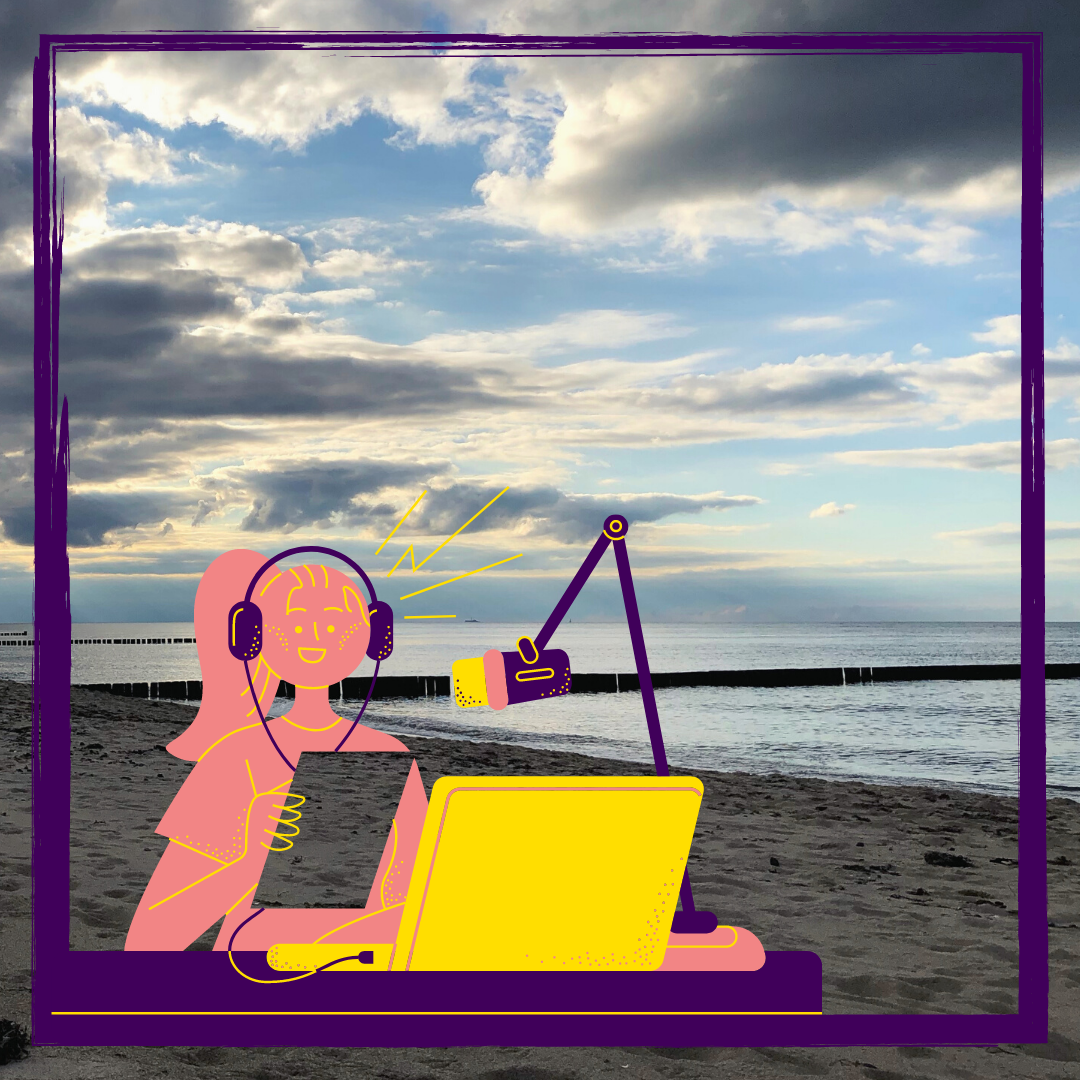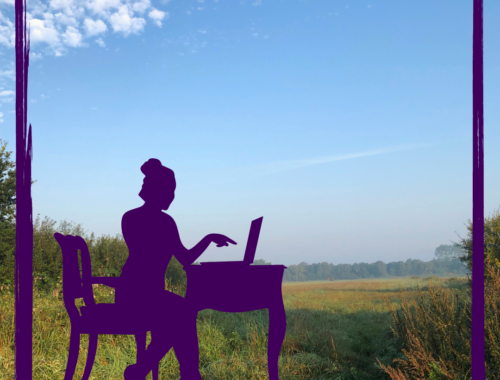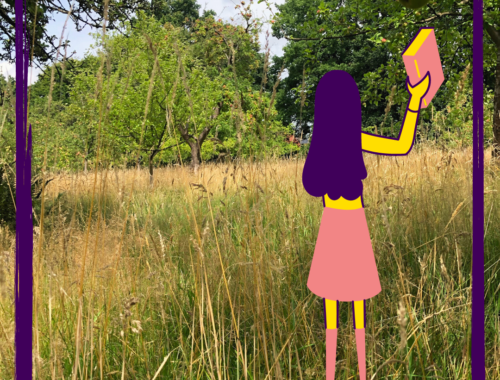
Blog and podcast, a dream team for digital teaching?
Inhalt / Content
Sometimes you need a little nudge from the outside to try out what is actually obvious. For me, the ad hoc switch to virtual teaching during the Corona crisis last semester was such a nudge. For the first time I saw my blog and podcast as potential, asynchronous, digital teaching offers. And so I took the opportunity to test the question: Are blog and podcast a dream team for digital teaching? A first conclusion after one semester of use in an introductory literary seminar is: Yes, they can be a dream team, if you use them in a smart way. Today, I share my tops and flops from the first digital semester with you today.
Blog and Podcast: Potentials of two digital media
Both the blog as a primarily written medium and the podcast as an autonomous online medium are characterized by a high degree of flexibility. You can upload what you want at any time. Anyone with a reasonably good Internet connection can access it at any time. In addition, podcasts in particular are currently enjoying increasing popularity (Deck and Meyer-Tippach, 2020). Many use Podcasts for in times, in which they are not actively learning, e.g. while driving in a car or eating (Deck and Meyer-Tippach, 2020). Furthermore, thanks to technical possibilities, it is no longer a problem to produce a podcast (Werner et al., 2020).
But depending on the hosting service you use for your blog and podcast, you have to be careful for data protection reasons. If you collect or your provider collects personal data, you cannot integrate blog and podcast as a mandatory element in your teaching. Students must be able to choose voluntarily whether they want to use your blog and podcast under these conditions.
How did I find out that blog and podcast can become a dream team for digital teaching?
Accordingly, I had also left it up to the students to use blog and podcast to deepen the content of the seminar. In order to give them an overview of the learning materials used and so that I could see what was actually being used, I provided a to-do list for each session. This was sent back to me so that I could evaluate it anonymously. Of course, the response was better at the beginning than at the end of the semester and the sample was quite small overall, but a trend is emerging nevertheless.

Best Practice – Top 3 blog articles in my digital teaching
The written blog format seems to be preferred for topics concerning scientific work. The methods, often still unfamiliar to students, can be explained in detail in blog articles. At least that is what the three blog posts most frequently used by students suggest (unfortunately, not all of them are translated yet):
- Let’s define text briefly
- Writing blog posts vs. writing scientific texts
- The double face of rhetoric and why we do not appreciate it enough
By the way, these articles have something else in common. They are very long. All three posts have about 2000 words and are therefore much longer than the blog posts I usually write and which are usually half as long.
Best Practice – Top 3 podcast episodes in my digital teaching
Deepen, reflect, complement – the podcast format is ideal for this. And in my opinion, this is pretty good news for teachers of the humanities. When do you ever manage to address everything you want in 90-minute seminar sessions? So if you have a podcast, you can easily outsource some of the material. Your students then have something to go over in more detail later on. The three podcast episodes most often used by my students for follow-up are
- Let’s define a text (24 minutes)
- Literature and its narratives (28 minutes)
- The author today (25 minutes)
The longer the better!
After the first digital semester I read on Twitter from time to time that students found the workload too high. Especially additional written tasks would have exceeded their usual working hours. That’s why I was surprised that my students preferred both the long blog articles and the longer podcast episodes. Blog articles of 2000 words and podcast episodes of 30-40 minutes – that’s plenty of room to present topics in detail.
Worst practice – 4 topics that did not fit into blog and podcast at all
- Digital literature search 5+1 tips to find good scientific sources (Blog)
- Quoting – the total horror (Blog)
- Making group work meaningful with the right mindset (Podcast)
- Artificial intelligence and literature (science) (Podcast)
Why the students did not like to deepen these topics with Blog and/or Podcast, is difficult to say. Maybe it had practical reasons and they just didn’t make it in the week they appeared in. The topics of electronic researching and quoting are certainly not among the favourite topics of students in general. They are dry and have little to do with the content or the part of the work that is fun. Maybe that’s why these blog articles were less well received. The topic of group work does not fit into the pattern described above for preferred podcast topics. So I’m not surprised that this episode was used less often to complement the seminar. Artificial intelligence, on the other hand, would fit well into the pattern. Here I rather think that this is too exotic a field of literature, which is simply not so popular with my more traditionally interested students of literary studies.
If you are now wondering whether you should therefore refrain from such topics, I would like to warn you against jumping to hasty conclusions. Your students are an important target group and turning your blog and podcast into a dream team is not the only one. If I look at my statistics as a whole, I see, for example, that the blog post “Quoting – the complete horror!” has quite good statistics and that the other three posts mentioned above are each in the middle of the field in terms of views from readers and listeners.
Turn your blog and podcast into a dream team!
If you want to get the most out of your online media channels on the one hand and on the other hand do not want to invest a lot of time unnecessarily, I recommend the following strategy. Align your blog to scientific work. Give tips for researching, quoting and writing. Explain step by step and in detail what you expect from your students.
Your topics and content, on the other hand, are better suited to your podcast. Here you can go into more depth than you might think. Your students can follow you in a very relaxed way and still go quite deep into the topic. This way your blog and podcast become a dream team. That much is for sure!
List of all articles with podcast episodes created for my seminar:
- Let’s define a short text
- Literature and its narratives
- The author today
- Define your target group or: if you already know the intended reader, then use it!
- Writing blog posts vs. writing scientific texts
- Citation – the total horror?
- Artificial intelligence and literature (science)
- Making group work meaningful with the right mindset
- The double face of rhetoric and why we do not appreciate it enough
- Digital literature search: 5+1 tips for finding good scientific sources online
Translated with www.DeepL.com/Translator (free version)
You May Also Like

WHAT TO WRITE ABOUT IN HUMANITIES BLOGS?
October 8, 2020
10 Classics for your holidays
August 13, 2020
